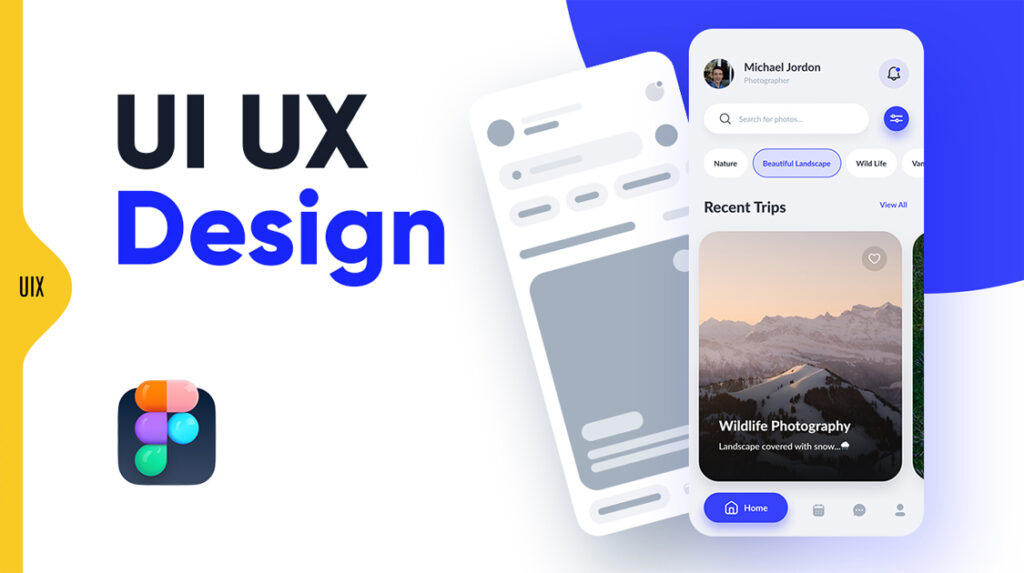
Mobile UI/UX (User Interface/User Experience) designing involves creating visually appealing and user-friendly interfaces for mobile applications.
Here are some key considerations and best practices for mobile UI/UX designing:
- User Research: Understand the target audience, their needs, preferences, and behaviors. Conduct user research, including surveys, interviews, and usability testing, to gather insights and create user personas. This helps in designing an interface that caters to user expectations.
- User Flows and Information Architecture: Define user flows, mapping out how users will navigate through the app and accomplish tasks. Organize the app’s content and features in a logical and intuitive manner, creating a clear and coherent information architecture.
- Wireframing and Prototyping: Create wireframes to establish the app’s basic structure, layout, and hierarchy of elements. Use prototyping tools to create interactive prototypes that simulate user interactions and validate design decisions before development.
- Visual Design: Develop a visually appealing interface using appropriate color schemes, typography, icons, and imagery. Create a consistent and cohesive visual style that aligns with the app’s branding and target audience.
- Responsive Design: Design interfaces that adapt to different screen sizes, resolutions, and orientations. Ensure that the app’s layout and components are flexible and responsive to provide a seamless user experience across various mobile devices.
- Intuitive Navigation: Design navigation systems that are intuitive and easy to use. Utilize standard mobile UI patterns and conventions, such as bottom navigation bars, hamburger menus, or gesture-based navigation, to provide familiarity and ease of use.
- Interactive Elements: Incorporate interactive elements such as buttons, sliders, progress indicators, and gestures to enhance user engagement and provide feedback during interactions. Use animation and micro-interactions to make the app feel responsive and engaging.
- Usability and Accessibility: Prioritize usability by designing interfaces that are easy to understand and navigate. Consider accessibility guidelines to ensure that the app is usable by individuals with disabilities, including proper text alternatives, color contrast, and support for assistive technologies.
- Feedback and Error Handling: Provide visual feedback to users when they interact with app elements or perform actions. Design clear and concise error messages to guide users in resolving issues or completing tasks successfully.
- Iterative Design and User Testing: Iterate and refine the design based on user feedback and usability testing. Continuously test the app’s interface with real users to identify pain points, improve usability, and enhance the overall user experience.
Design tools such as Sketch, Figma, Adobe XD, or InVision can assist in creating UI/UX designs, wireframes, and interactive prototypes for mobile applications. Remember to focus on creating an intuitive and delightful user experience by understanding user needs, designing for usability, and incorporating visual aesthetics that align with the app’s purpose and target audience.